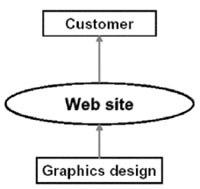
An introduction to the InternetWeb sites in business [Archives:2003/645/Education]
June 26 2003
 |
 |
 |
Academic Head
NCC Education, Yemen Center
Starting with this lesson, we will discuss the following issues:
– The current usage and trends of the use of WWW in business.
– The primary basis in designing web sites keeping in mind the needs of both the sponsor and the user.
– The basic concepts of design and production of web pages.
– How WWW is used in marketing.
– Use of some techniques to make a web site accessible and popular.
– Responding to customer enquiries.
– The current trends in Internet commerce.
– The need to protect a web site.
Business will not use the Internet unless it can demonstrate some real and obvious business benefits such as improved profits or sales volumes. How can businesses use the Internet to achieve these? E-Commerce module is the most important business use of the Internet. There are two sectors which benefit the most by the use of the Internet: customers and businesses.
Customer Viewpoint
From the customer viewpoint, the Internet offers some significant advantages. For example, the customer can get the products information directly from a wide number of suppliers. This allows prices and specifications to be compared before committing itself to any contract with the supplier community. Also, the purchase of commodities from the Internet is a pleasant experience because the customer has only to sit in an armchair at home and enjoy the shopping. Providing a storefront 24 hours a day and 365 days a year has great advantages for customers, and opens up markets across the world countries. The speed of purchasing cycle has great attractions for people who work under severe time constraints.
Business Viewpoint
The great benefit of using the internet to sell something or provide after sales services is that the site could be reached by every customer worldwide. There is no other avenue available that has this potential. By using the available designing tools the trader can easily change the presented material dynamically. Also the pricing and stock levels of products can be changed with each individual purchase. Moreover, the size of a business has little relevance to the scope of their web site presence. A small organization can match the visual impact of a multinational.
WWW Business Models
In order to recognize how the WWW could be used for real business advantage, it is useful to consider some possible models for interaction with the customer. These models give us a framework for considering the types of technology and commercial infrastructure that are necessary for a successful web site. Some of the most common business models found in the internet are WWW Advertising, WWW Publishing, and Information Gathering and Dissemination.
WWW Advertising
This model simply replaces and enhances traditional advertising by using the WWW. It is a very cost-effective option for business in advertising field. The technical structure of this model is represented in Fig1.
This Internet business models achieve their business goals by having the web site visitors read or watch the ads displayed in the web site while using another service: for example providing free e-mail service and at the same time displaying ads for other businesses. The best examples of these models we can find in the internet are hotmail.com and yahoo.com. In this model the customer or the visitor rarely interacts with the web site except when using the free services. Revenue in this model comes from the business that is advertised in the web site.
WWW Publishing
In this model the web site provides a gateway between the information resources or producers and the customers. It is necessary to obtain the rights to use the content provided on the web site and in some cases that costs a lot.
Revenues can be derived from the sale of subscriptions. The web masters then have the responsibility of protecting the web site content. Revenue also could be derived in some cases from advertising in the same web site. Fig2 shows the technical layout of the web site.
Information Gathering and Dissemination
In this model the customer is both provider and consumer of information.
The web site gathers information from a large number of sources and then processes and sorts out the information. This processed information is then sold back to a wide group of users. This model is typical of sites that collect reports about products from consumers, carry out some statistical analyses and then re-sell the results as a finished report. For example some web sites collect information from customers about cars and then analyse this data to get useful information to conclude results that could be of interest for other customers.
Revenue could come from subscriptions, advertising, and sponsorship.
Fig 3 shows the technical layout of this kind of business model. Notice that in this model the customer interacts with the web site most of the time.
Information Processing
This model has some similarities with the previous one except that there is no intention of collecting information from many customers and producing a report. Instead of that the web site carries out some useful and complex processing for the customer based on the data that the customer provides.
A good example of this mechanism would be a web site that prompts the customer all the information required to fill out an income tax return in the most tax-efficient manner. Fig 4 shows the technical layout of this model.
Next week: Web Sites Designing.
——
[archive-e:645-v:13-y:2003-d:2003-06-26-p:education]


